
10 Things to see Along the Missouri River in North Dakota
Long before there were scenic byways, there was the Missouri River, the longest river in North America. The name ‘Missouri’ is derived from the Missouri tribe name, meaning ‘people with wooden canoes‘. The Missouri has the nickname “Big Muddy,” because of the large amount of silt that it carries. For over 12,000 years, people have depended on the Missouri River and its tributaries as a source of sustenance and transportation.
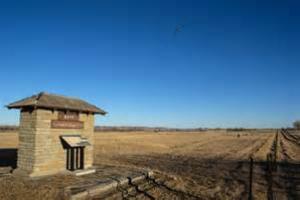
Listed on the National Register of Historic Places and as a National Historic Landmark, the site preserves a large prehistoric village occupied by the Mandan Indians around 1450. Self-guided interpretive walk.
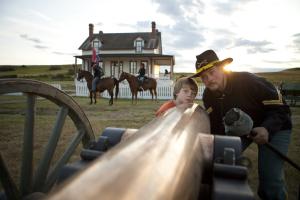
Reconstructed blockhouses, the Custer House and Native American earthlodges dominate the grounds where Lt. Col. George Custer and the 7th Cavalry were stationed before the Battle of Little Bighorn. Earthlodges depict the lifestyle of the Mandan Indians, who occupied this site from about 1575-1781.

Cruise the majestic Missouri River between Bismarck and Mandan on the Lewis and Clark Riverboat. Try a regular excursion or if you fancy a bit of elegance in your life, try our special dinner cruise.

This site contains the ruins of a large Mandan Indian earthlodge village inhabited during the period of A.D. 1500-1781. The remains of earthlodges, refuse mounds, and the two surrounding fortification ditches are clearly discernible.

Extensive trail system criss-crosses the park, which is purposely left primitive to preserve the land's natural beauty. The River Peoples Visitor Center has displays and information about the mighty Missouri River.
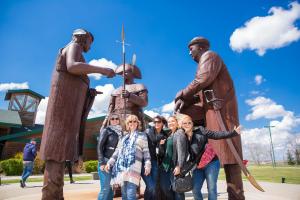
Newly-remodeled center with state-of-the-art interactive exhibits and a new collection of artifacts, a new exhibit honoring North Dakota's family farms and much more. We also welcome you to step back in time and visit nearby Fort Mandan.

Held back by the large earthen Garrison Dam, Lake Sakakawea is the third-largest man-made lake in the United States. The lake is 178 miles long, has more than 1,500 miles of shoreline and its deepest part is about 175 feet. The Lake is a recreational mecca for anglers, boaters and campers.
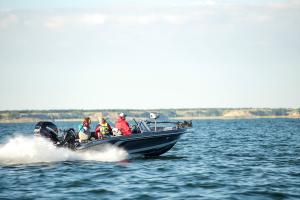
Fort Stevenson State Park is home to the Governor's Cup Walleye Tournament and two marinas. It also features the Guardhouse Museum where visitors learn the history of the former post.
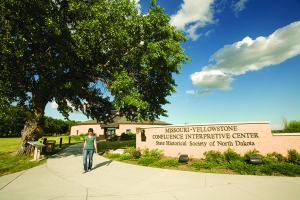
Confluence Center tells the story of the confluence of these two mighty rivers, as well as provides the same magnificent view that Lewis and Clark Expedition members enjoyed when they visited in 1805 and 1806.

For many years in the early 1800s, the post served as principal fur trading post of the American Fur Company on the upper Missouri River. Served Assiniboine, Crow, Cree, Ojibway, Hidatsa and Blackfeet tribes.
Wreck of the steamboat Abner O’Neal
Hidden below the Missouri River lies the wreck of the steamboat Abner O'Neal. Hidden, that is, until the water levels dropped in 2020 and continue to drop. These aerial shots were taken in October 2020 after receiving notification from the boating public that the location was visible, and consent to access the wreck site was granted by an adjacent landowner. Learn the story of the Abner O'Neal, which sunk in 1892 while transporting 9,000 bushels of wheat from Washburn to the Mandan roller mill, at bit.ly/abner-oneal.
?????? ???????? ???? ??? ????? ?’???? ?? ?????? ??? ?????????? ?? ?????-????????? ????? ??????? ?? ????? ??????. ??????? ??????? ??? ????? ??????????? ??????? ??? ???? ??? ???????? ??? ?????????? ?? ????????? ???? ??? ????????. ??????? ??? ????? ?????????? ??????? ??? ?????????? ?? ????? ??? ????? ?? ? ???????????? ???????? ??? ???????? ?? ???? ???? ????????.